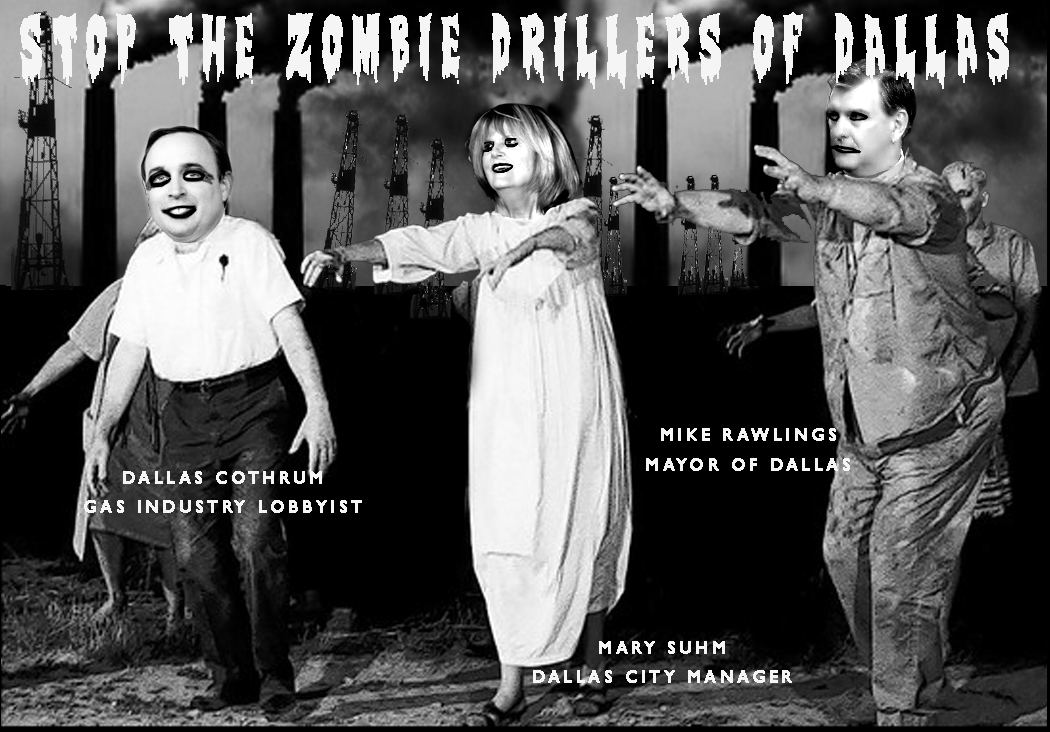TCEQ
Illegal Border Crossings
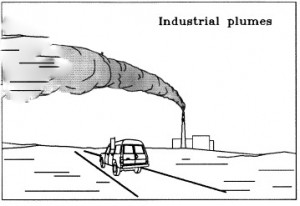 If you live downwind of a state line in the US, you're more likely to breathe the wastings heaved out by heavy industrial air polluters according to a new study reported on by the Washington Post today.
If you live downwind of a state line in the US, you're more likely to breathe the wastings heaved out by heavy industrial air polluters according to a new study reported on by the Washington Post today.
University of Georgia, Georgetown, and University of South Carolina political scientists collaborated on the findings, which document "State Line Syndrome, i.e. when large air polluters are disproportionately likely to be located near downwind borders instead of sharing the burden with more interior locales.
This is not a new phenomena. Lots of case law has been made by one state suing another over cross-border pollution issues. About a decade ago, the Midlothian cement plants were cited by Oklahoma and Tribal Authorities as a statistically significant contributor to haze problems at the Wichita Mountains Wilflife Refuge in the western part of he Sooner state. However, what the new study shows is despite the lack of no logistical reason for many large air polluters to be located near a border, that's where they're concentrated anyway. The result?
"…the farther a location is from a downwind border, the lower the odds that it will host an air polluter. For instance, being about 100 miles upwind of a state line reduces the odds of an air polluter locating there (compared to a hazardous waste facility) by around 6 percent.
The effect is also strongest among the biggest polluters. The facilities that release the most toxic emissions (measured by number of pounds) are the most likely to locate near a downwind border."
But what's at least as interesting to citizens as the confirmation of concentrations, are the motives the professors hypothesize for allowing or designing these concentrations by state government:
"One is that state policy makers encourage it. For instance, Texas would surely want the economic development and tax revenue that would come from a new manufacturing plant. But the state could probably do without the resulting toxic emissions. So one option would be to encourage a manufacturer to locate on Texas’ northern border, where the wind tends to blow across the Red River into Oklahoma.
Alternatively, companies might decide on their own to build a facility in a location where pollution would be carried across state lines. Doing so might reduce the effectiveness of NIMBY, or not-in-my-backyard, activism. If the citizens who feel threatened by a plant live across the border, they may have a hard time persuading lawmakers in the facility’s state – who have little incentive to attend to the concerns of out-of-state residents – to oppose its construction or operation."
That's sounds like the paranoid ranting of a angry housewife or two we've met over the years. And it probably gives Texas officials too much credit for caring about their own airshed. But it does once again show the impossibility of trying to solve air pollution on a piecemeal basis rather than taking a firm and aggressive federalist approach to the problem. What if we dealt with infectious diseases the way we do air pollution – refusing to recognize the transport of the harmful virus across local or state lines? Science has amply demonstrated that we do all indeed live downwind. Time for policy to catch-up.
Notice Something Missing So Far This Summer? Smog Alerts.
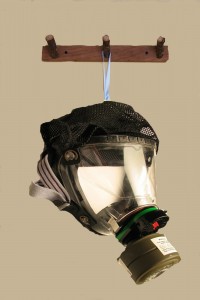 Along with cooler weather in general and a little more rain this Spring has come some relief from really dirty air in DFW.
Along with cooler weather in general and a little more rain this Spring has come some relief from really dirty air in DFW.
Last year at this time, we'd already had 6 "exceedences" of the old 1997 85 parts per billion ozone standard in May, and countless exceedences of the tougher new 75 ppb standard that is supposed to be attained by 2018. As of today, we haven't had one even one monitor reading above 85 ppb and only a handful in the 75 to 85 ppb range.
For the last two years in a row, DFW has seen a decrease in air quality, and an increase in smog. Could 2013 be the year that trend is halted?
Weather takes a lot, or even most of the credit. Cooler temperatures and more moisture are not conducive to ozone creation. But unlike during the recession, new car sales seem to be taking off the way the Rick Perry-approved engineers at the Texas Commission on Environmental Quality wanted them to two to three years ago. It's possible that the replacement of older dirtier vehicles with newer, cleaner ones by the thousands has finally made a difference you can't see. There's also the impact of cleaner operations at the Midlothian cement plants thanks to citizen victories over the last decade, (although the kilns are rapidly turning back into garbage burners), fewer coal burning plants downwind, and other improvements up and down the southeast to northwest axis that carries our predominant winds from Houston to here.
On the other hand, last June was pretty quiet until the 24th, and then all hell broke loose, with ozone levels into the triple digits. 2012 turned out to be a very bad year for safe and legal air.
And there's the unknowns that nobody's really examining closely – at least not in public. How much ozone pollution is being caused by the natural gas infrastructure in the Barnett Shale that's been built over the last decade and gets bigger every week? How much is the gas industry polluting upwind of us in places like Freestone County between here and Houston? Does the continuing boomtown growth in DFW population cancel out the improvement in individual vehicle emissions?
From a regulatory point of view, no matter how good or bad this summer is, we don't get credit for it either way. Another bad year wouldn't be held against us. Likewise, no violations this entire year wouldn't buy us any more goodwill from EPA. We're in a limbo period, where everyone is just waiting around for the average readings from 2015 -2018 to accumulate and tell us what category of compliance with the new 75 ppb standard we're in. While it would certainly help the cause if the region had some forward momentum in lowering the levels of smog going into 2015, officially, it makes no difference at all – unless you're breathing air. Then, according to EPA's own scientists, anything above 65-70 ppb is damaging to human health.
Theoretically, the TCEQ is supposed to be putting together yet another "DFW clean air plan" to reach that 75ppb standard, to be implemented sometime between now and 2015. The last time it tried to reach such a regulatory goal – the 85 ppb standard – it ended up with a plan that worsened air quality here by starting way too late and basically doing nothing but watching as new cars were going to clean up the air in the middle of a recession. (By the way, the "official" regulatory date of that failure is coming up next week even though the failure was certain last summer. Stay tuned to see if TCEQ acknowledges it in any way).
It's the summer of 2013. Any big changes that need to be in a summer of 2015 clean air plan should be being discussed and set in motion now, especially if they need 2015 state legislative approval, or lead times for industry to adapt. However, state or regional officials have yet to call a meeting of the local advisory group that's supposed to be monitoring the development of that plan. No date is set for such a meeting.
We can hope that a confluence of circumstances is making it possible to have cleaner air in DFW, but as long as Rick Perry is Governor, it's unlikely such an important public health goal will override political agendas.
Can Obama’s EPA Save Us From TCEQ’s “Clean Air Plans”?
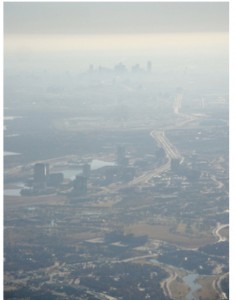 It's only a proposal, but the Obama Administration's plan to cut sulfur in gasoline is aimed primarily at drastically reducing smog-forming Nitrogen Oxide, Volatile Organic compounds and Particulate Matter, the major pollutants that causes DFW to have such bad "ozone seasons." Would it reduce it enough to finally put the region in compliance with the Clean Air Act? Good question.
It's only a proposal, but the Obama Administration's plan to cut sulfur in gasoline is aimed primarily at drastically reducing smog-forming Nitrogen Oxide, Volatile Organic compounds and Particulate Matter, the major pollutants that causes DFW to have such bad "ozone seasons." Would it reduce it enough to finally put the region in compliance with the Clean Air Act? Good question.
Sulfur content in gasoline would drop from the current standard of 30 ppm to 10 ppm by 2017 – one year before the compliance deadline for the tougher 75 parts per billion national ambient air ozone standard. That's not a coincidence. The EPA hopes that this initiative is going to drive urban ozone clean-up throughout the country, even in stubborn dirty air hot spots like DFW, which hasn't been in compliance with a smog standard since it was created over 20 years ago.
Along with new stricter emission standards for cars that have already been implemented, the pollution from cars will be coming down over the next decade to historic-per-vehicle lows. Since forever, the state of Texas and local officials have put almost all the blame for DFW's poor air quality on cars. So does this mean that we might actually have a chance to breathe safe and cleaner air, by say, 2020?
Maybe.
First, there's the question of continued growth. If per-car emissions go down, but you're importing 120,000 more cars every year into North Texas, the decreases in emissions are being canceled out to some degree. In this respect, DFW has been its own worst clean air enemy. By attracting new residents year after year and, for the most part, not creating successful transportation options other than private vehicles, the Metromess dooms itself to more total car pollution.
Then there's the climate. Everyone knows how unbearably hot it can get in DFW during July, August and September. That heat and sunlight is one reason we have a smog problem – it chemically transforms the Nitrogen Oxides (NOx) and Volatile Organic Compounds (VOCs) into ozone. What if it gets hotter, and drier? When the ground can't cool off at night and you start out with high morning temperatures that will only get worse by 5 pm, you know it's going to be a bad air day. The more days like that, the harder it's going to be to have safe and legal air despite the changes in engine design and fuel specs. So climate change could rob us of some of those automobile reductions.
If the last couple of years are any indication, you also have to wonder how much of those vehicle changes will be lost on DFW because we live in the Barnett Shale. 16,000 gas wells that are relatively short-term air polluters are being supplemented with more processing infrastructure like compressors, refineries, and pipelines that are year round polluters. Last year's Houston Advanced Research Consortium study estimated the impact of even a single compressor or flare to be as much as 3-10 ppm within five to ten miles, something it would take thousands of cars to accomplish. Even if those cars aren't there anymore, or their emissions make them less of a clean air threat, you have these decentralized major sources taking up the slack. This is one reason why the state itself told EPA that last year there was more VOC air pollution coming from oil an gas sources in North Texas than all the area's on-road cars and trucks, and a large contributing cause to why air quality has been getting worse in DFW over the last two years.
It's not just the number of these facilities but their physical location as well. The more the gas industry moves eastward, the more of the DFW core urban area is "downwind" of these sources, the more the pollution from these facilities combines with car emissions and other urban sources, and the longer they take to leave the now 10-county "non-attainment area," meaning they linger, exposed to sunlight and heat, and have more opportunity to create high levels of ozone. If you have more flares and compressors within 1 to 3 miles of one of 18 or so state air monitors – you will probably begin to see higher ozone readings as a result of their operation – as you have the last couple of years. Most of these pipelines and processing facilities have come online only since 2006.
And that's just in the North Texas area. There's evidence to suggest that the gas industry's building-out to the southeast – or upwind – of DFW is also affecting our air quality. In the same way that Houston's air pollution is said to make our initial "background" ozone levels higher, so too the 60-100 compressors in Freestone County, about 90 miles southeast of Dallas also feed their under-regulated "Standard Permit" pollution into the DFW urban mix. As does the Haynesville Shale gas play itself, as do the remaining east and central Texas coal plants and so forth. If sources to the south and east continue to increase their emissions, it means DFW starts from further and further behind, so that even if cars get cleaner, they might not get so clean so fast as to compensate for this imbalance.
Then there's the "fire hose" effect of the three Midlothian cement plants sitting so close to one another as to create one large super plume that's usually pointed toward the DFW urban core most of "ozone season." Because of citizen efforts, those cement kilns are substantially cleaner in 2013 than they were as recently as 2008. All but one wet kiln is closed, and that one is due to shut down next year. None are burning hazardous waste. But they're still the largest stationary sources of pollution in North Texas – including emitting copious amounts of NOx and VOCs – and they can still impact monitor readings miles and miles away. It's unclear what impact the burning of newly-permitted "non-hazardous" industrial wastes like car parts and plastics in the Midlothian kilns will have on the formation of smog-forming pollution.
EPA estimates an 80% drop in VOC and NOX pollution from cars as a result of its new low-sulfur fuel rule. That's steep. Remove that amount of pollution from all DFW's cars and trucks, and you'd expect to see a substantial improvement in air quality. That's what you'd expect. But, depending on a lot of other variables the state and federal government may or may not be interested in fixing, it could take more than this proposal to bring DFW into compliance with the new 75 ppb ozone standard that is now the federal definition of safe and legal air.
State Budget Writers Vote to Keep Raiding Anti-Smog Funds
 Today brings news of the first skirmish in this year's state Legislative session over using anti-smog funds collected in DFW and other EPA "non-attainment" areas to ease budget gaps in general revenue.
Today brings news of the first skirmish in this year's state Legislative session over using anti-smog funds collected in DFW and other EPA "non-attainment" areas to ease budget gaps in general revenue.
The Dallas Morning News has an account of local Dallas State Representative Helen Giddings teaming up with Houston Rep. Turner Sylvester during a House Appropriations Committeee meeting on Tuesday to make the case that the funds are desperately needed to help reduce air pollution in Texas' largest cities where unhealthy air is still the norm during "ozone season."
Everyone who gets their car inspected in North Texas pays an extra $6 that goes to the "Low-Income Repair and Replacement Assistance Program," (LIRAP). The money is supposed to be used to help low-income car owners upgrade their vehicles so they'll run cleaner. Because they can't afford to buy new vehicles as often, low income owners usually drive older cars. Older cars are dirtier cars. Fix them or upgrade them to newer cars and you reduce air pollution.
According to the folks that wear the green shades, the LIRAP fund will have approximately $77 million in unspent money at the end of August. Another $80 million is expected to be collected in the state's "non-attainment areas" over the next two years. That's a lot of car repair money. But as it turns out, state budget writers are proposing to only spend a little over $11 million in the next two years to be split up between Houston, DFW, Austin and San Antonio.
The size of the diversion has publicly angered elected officials in DFW and the other urban areas who are facing compliance with a new, stricter EPA smog standard by 2018 even as they annually fail to meet the old standard. In DFW and Houston LIRAP funding is traditionally used to build the clean air plans that must get approved by EPA. Without sufficient funds, local officials are telling the state that its next plan, due in 2015, might not get approved by EPA. You can imagine the disappointment in Austin of hearing that news.
Austin and San Antonio officials have actually threatened to pull out of the fee system all together unless they get more back of what their residents are putting in. That huffing and puffing paid off a bit Tuesday, as the Republican-led committee voted to approve an additional, but token, $1.4 million to those cities. Still, perhaps that lesson will not be lost on DFW officials, who have a long history of suffering silently as the state increasingly robs the region of its ability to control it's own air quality fate.
This was only the opening round of votes, and the House is more conservative than the Senate. But it's probably not a good sign that Rep. Giddings was the only one of at least five DFW-based members of the House Appropriations Committee quoted in News as leading the charge. Missing in Action was former Arlington City Council member and previous sometime-clean air supporter Diane Patrick, and oh yeah, the Chair of the Committee that hails from non-attainment Ellis County, Representative Jim Pitts. If the local North Texas clean air establishment can't get more help from its own players in the Lege, they're unlikely to see more money flowing their way.
Former Exide Smelter Employee: It WAS as Crappy As You Thought
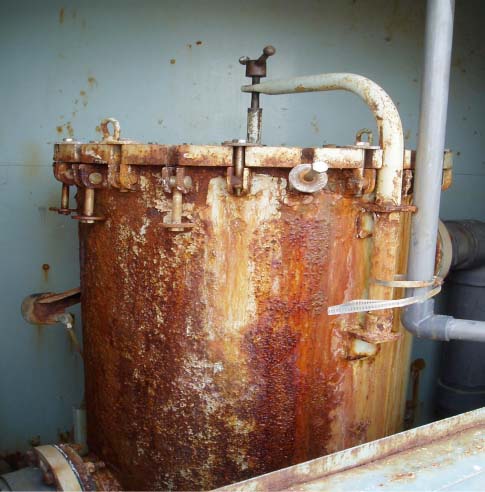 Although the Great Dallas Drilling Scandal has kept our heads spinning lately, we did mange to take note of a rather big story in a small paper that should get a lot more coverage.
Although the Great Dallas Drilling Scandal has kept our heads spinning lately, we did mange to take note of a rather big story in a small paper that should get a lot more coverage.
On February 21st, the Frisco Enterprise-Plano Star community newspaper published an article about the Exide lead smelter in Frisco using an unnamed ex-Exide employee as the sole source. The sole source's anonymity probably kept major outlets from offering the same coverage, but in this case the specifics are so compelling that we're glad the suburban chain took the chance.
Although he never gives his name, the Star says the employee "served in a managerial position at the plant." From the workday scenarios he describes he appears to have been directly involved in Exide's production line. Taken together, all of the accounts he gives the paper would seem to confirm residents' impression that the circa- mid 1960's Frisco facility was a mobile home park with a lead smelter in the middle of it.
"I guess we were probably producing $200,000 worth of product every shift — $600,000 worth of product every day," he said. "Yet [one time] we had six people working on [maintenance when the plant lost power]. We had one flashlight and one set of tools. What I needed was six flashlights and six sets of tools, but they wouldn't even give me that."
If Exide wouldn't open up the corporate wallet for flashlights, no wonder the company balked for so long about adding multi-million pollution controls to reduce lead emissions to legal levels.
And, according to the Star's source, those lead (and cadmium and arsenic) emissions could be many times what's been officially estimated by government agencies, or even citizens' own air modeling results published last year.
Power being knocked out was a particular issue, the source said, as vapors resulting from the lead-acid recycling system were no longer captured. Those vapors include lead particles, and long periods of lead exposure result in chronic lead poisoning, which in turn can result in physical defects such as kidney damage.
The former employee doesn't say how often this kind of outage occurred, but he makes it clear it wasn't infrequent. It wouldn't take too many such incidents to significantly raise the exposure level of those residents living downwind. Of course, when the state and EPA are calculating what constitutes "safe" levels of exposure to a facility's pollution, they never take into account these kind of "upsets" or accidents that can balloon the chances of inhaling harmful poisons.
Among the other allegations made by the ex-employee:
Only 1/5 of the violations Exide received "for a lack of federal compliance or unsafe working conditions" were forwarded to the Texas Commission on Environmental Quality.
Incident reports submitted to the state about violations represented "a great difference in the truth" between what was being claimed by Exide, and what really happened.
These incidents were as frequent as every other week.
Prior to the announced visits of TCEQ or EPA inspectors, "employees were paid overtime to clean the plant extensively. The same initiative was made before visits by non-plant employees, such as trips by corporate managers. Outside of those events, however, the plant was rarely cleaned."
Carbon dioxide monitors were constantly beeping, indicating dangerous CO2 levels. "The environment of operations was poisoning us."
Ah, but all of that is in the past, right? Not with Exide planning to leave over 9 million pounds of lead smelter waste behind on 90 acres in the middle of central Frisco, with another hundred acres or so outside of that donut hole" being purchased by the city for rehabilitation.
When asked if he would feel comfortable visiting the land Frisco purchased from Exide when it's remediated to federally compliant levels, the former employee said he wouldn't.
"With the way it's going right now, I'll never take my children or my dog to that area," he said. "I studied petroleum engineering and geology in college, and I know the bad stuff sinks to the bottom. I will never [go there]. It'll be nice to have it gone, but I don't know how you patch that up. You have to pull up everything, wrap it up and get it gone."
Official reaction was predictable:
"An Exide Technologies spokeswoman said the company "does not comment on unsubstantiated hearsay"…"A TCEQ spokeswoman said she could not comment on whether or not an employee signing an incident report with false information would be illegal without being told what reports are in question."
It'd be better if former employees like this came completely forward and were willing to cooperate with the EPA in exchange for immunity, but we're grateful for the peak inside Exide. It confirms not only what we already suspected about the way this company and this plant did business, it also once again confirms the way all bad acting polluters behave when it comes to hiding their real identity from the public and regulators.
EPA Challenges State Clean-Up of Frisco Smelter Waste
 Despite denying that it was submitting comments on the state's plan for cleaning up the recently closed Exide lead smelter, the Environmental Protection Agency turned in a sometimes scathing assessment of Austin's proposal to allow the company to treat prohibited hazardous waste that still lies buried in its landfills in Frisco.
Despite denying that it was submitting comments on the state's plan for cleaning up the recently closed Exide lead smelter, the Environmental Protection Agency turned in a sometimes scathing assessment of Austin's proposal to allow the company to treat prohibited hazardous waste that still lies buried in its landfills in Frisco.
"The landfill is not permitted or constructed as a hazardous waste unit. Please clarify the regulatory/statutory provisions TCEQ is following that would allow for treatment of hazardous waste in the landfill," wrote EPA Associate Director Susan Spalding in a five-page letter sent to the Texas Com mission on Environmental Quality (TCEQ) on January 25th.
News of the Agency's comments comes on the eve of a public meeting scheduled by Exide for Wednesday night at the historic Frisco Depot to explain its clean-up operation.
Besides criticizing the on-site treatment of the hazardous waste, EPA also had a harsh review of the way Exide and TCEQ had identified areas of the current landfill with concentrated lead wastes that needed treatment, suggesting four times as much sampling as the company had proposed, and TCEQ had approved.
EPA also noted that a closed landfill in Frisco was already leaking hazardous levels of lead and selenium and suggested that the treatment method Exide is using in its current landfill was not going to be effective.
But in what may be a crushing blow to the company's plans to keep the wastes it generated for almost five decades buried in Frisco permanently, EPA stated that if the current landfill had been used for disposal after 2011 sampling to determine clean-up, which it almost certainly has,"This may require removal of all material" in the landfill.
Many of the problems cited by the Agency are the same ones citizens have been complaining about since Exide announced its unusual scheme to try to treat its illegal hazardous waste in place in its Frisco landfill, instead of digging it up and re-burying it in an official, licensed hazardous waste disposal site.
Exide does not have a permit to handle or dispose of hazardous waste. It's landfill is classified as a "non-hazardous waste" disposal site. The hazardous waste inside of it was discovered by inspectors several years ago.
Citizen groups have said Exide must apply for a full Resource Conservation and Recovery Act permit in order to deal with its prohibited wastes. EPA's letter seems to suggest that the Agency agrees.
Besides commenting on the landfill plans, EPA's letter also seeks changes in the dust controls guiding the smelter clean-up, and the public release of information about the clean-up.
Copies of the EPA letter can be downloaded from the Frisco Unleaded website here.
"We're very appreciative that EPA changed its mind and decided to comment on the ridiculous plans by Exide and TCEQ to use the same treatment method on this hazardous waste that failed to work the first time," said Colette McCadden, Chair of Frisco Unleaded, the citizens group who successfully campaigned to close the old smelter last year.
"We hope the EPA continues to provide needed oversight to what Exide and the state are doing – or not doing."
Other groups were more cautious.
"It's a pleasant surprise to see EPA comment so bluntly about the more absurd parts of the proposed Exide clean-up," said Jim Schermbeck of Downwinders at Risk. "My hope is that this is only the beginning of a new level of review for Exide by the Agency in light of the USA Today's "Ghost Factory" series chronicling what happens when it's not paying such attention. Only time will tell."
They’re Not Asking Your Permission
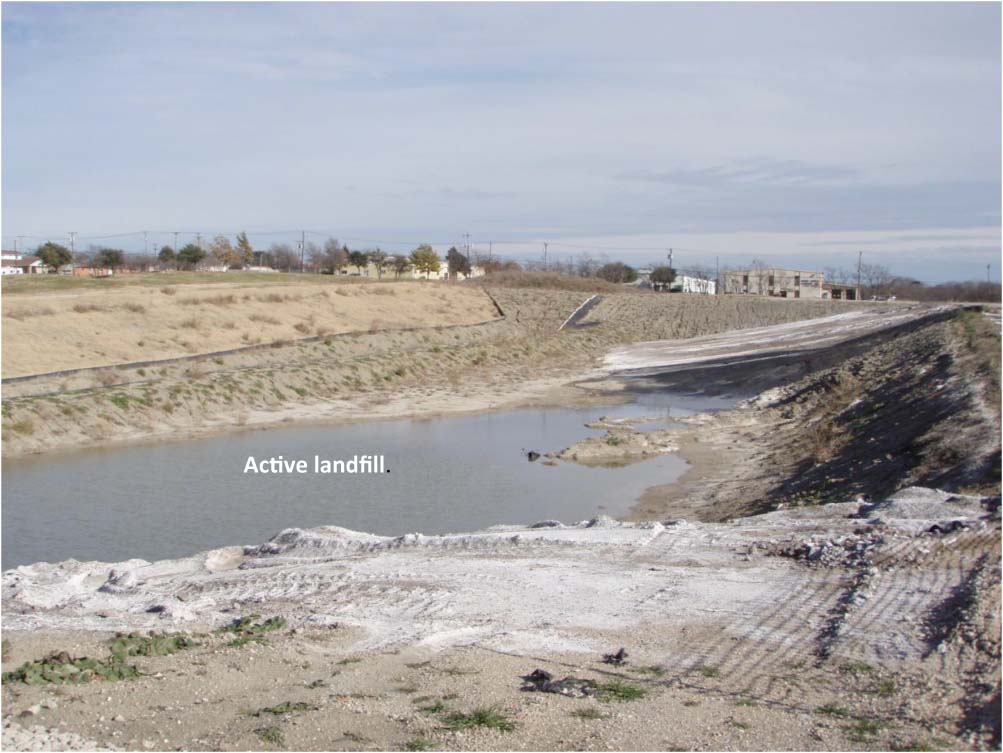 Exide and the State are planning Frisco's future without it's residents.
Exide and the State are planning Frisco's future without it's residents.
This Wednesday night may be one of the few times they can object in person.
Plans are proceeding for Exide to leave landfills full of its lead smelter waste in Frisco….forever
Landfills of lead on the edge of downtown that will pose a constant public health threat and economic dead zone
Landfills of lead along the banks of Stewart Creek as it flows downstream into the City's new "Grand Park"
Join us in saying no to their lead-filled future of Frisco.
Exide's Public Meeting on their lead smelter "Clean-up"
THIS WEDNESDAY NIGHT
7:00 pm
Frisco Depot
6499 Paige Street
(in the Historic District by Babe's)
Whether Frisco residents like it or not, Exide and the State of Texas are deciding to let millions of pounds of lead waste stay buried in Frisco forever – and the current City Council isn't trying to stop them.
While the city bought the less-contaminated outer ring of the Exide lead smelter, the most toxic part of the facility is still owned by Exide.
The City of Frisco has said that it won't interfere in the way the company and state decide to handle the tons of lead waste buried in this area, which stretches from Stewart Creek to the edge of downtown.
Exide, the state, and this city council are all deciding that it's easier just to leave lead contamination permanently buried in place in the middle of Frisco instead of moving it away from people and flowing water.
If citizens don't show up and fight back against these plans, Frisco residents will be dealing with lead contamination issues for decades – just like other communities that didn't have their lead smelter waste cleaned-up completely either.
A former Exide smelter site still sits abandoned in Dallas, some two decades after it closed, surrounded by monitoring wells and a chain link fence. We can't let that happen here.
Many residents sent e-mails to Exide last week saying they wanted a complete clean-up of its lead waste in Frisco. Now they need to come in person with the same message.
Frisco residents have to stand up for their home and community. Nobody at Exide or in government is.
Zombie Gas Permits on the March Again
Public (re)-Hearing on the Last Three Dallas Gas Sites.……including the newly-discovered "Rawlings Gas Refinery"
This Thursday
1:00 pm
Dallas City Hall
6th Floor
City Council Chambers
Press Conference followed by City Plan Commission Mtg
This is the "do-over" hearing demanded by the Mayor in order to win approval of these permits – after the first one in December resulted in denial.
Come and defend this victory or they'll steal it away from us.
Dallas Residents at Risk, the alliance of groups that we work with on this issue, will be holding a press conference at 1:00 pm – just like we did before the much-publicized January 10th reconsideration vote – and then heading into the CPC meeting at 1:30. Show up early because we'll be talking about a surprising new development in this fight and bringing you up to date with the latest information.
It's important to demonstrate that opposition to these permits is growing, so if you haven't made it down to City Hall before, Thursday is the day to come.
If you're a regular, then you know how much warm bodies in the audience mean to the moment.
They would have been no news coverage on the 10th without all of us standing up and publicly "shaming" the CPC over its "reconsideration vote" in person. You can't do that by e-mail or petition. We need you there. We need you clapping for the good guys. We need you hissing the bad guys. We need you. There is no substitute.
Looking for material for your testimony? Here are some things we know now about these sites that we didn't when the CPC turned them down in December…..
* Neither the Park Board nor City Council ever voted to allow surface drilling in parks. In fact, city staff assured the City Council in 2008 that would be NO surface drilling in parks. So where did Trinity East get the idea it could have two of its drill sites on city park land (The newly-named Luna Vista Golf Course and near-by gun range)? That's a really good question that nobody at Dallas City Hall has attempted to answer.
* One of the Trinity East sites now contains a large gas refinery and compressor station in addition to a pad site for 20 wells. This facility will become the 10th largest air polluter in Dallas the moment it comes on line, releasing 75-100 tons of air pollution every year only 600 feet away from the City's new Elm Fork Soccer Complex on Walnut Hill.
* Last September, the City of Dallas denied a new permit to a rock crushing facility near the Elm Fork Soccer Complex because its 17 tons of annual air pollution was deemed too threatening for children's health. However, five months later, the city is advocating allowing the operation of a gas refinery and compressor station that is estimated to release some 75-100 tons of air pollution a year. Why is 17 tons of air pollution a health threat but 100 tons is OK? Another great question nobody at Dallas City Hall has answered.
* Trinity East knew when it signed its leases with the City that drilling in parkland and the floodplains was prohibited. So why is the City of Dallas still saying its afraid of a lawsuit by Trinity for backing out of the deal if the permits are denied?
We can win if we keep showing up and asking questions.
Please show up this Thursday.
Public Health Action Alert – Exide’s “Community Meeting” on Wednesday
 Please come and insist that the clean-up of the Exide lead smelter be open to public notice and comment, and not done behind closed doors.
Please come and insist that the clean-up of the Exide lead smelter be open to public notice and comment, and not done behind closed doors.
Exide is hosting a hastily called "public meeting" on demolition and dust control plans for its former Frisco lead smelter Wednesday night beginning at 7 pm at the Frisco Depot in the Historical District, 6499 Paige Street.
Among other things, Exide wants to permanently leave a waste landfill in central Frisco with approximately nine million pounds of smelter waste inside, instead of trucking it out.
The city is letting the company have its way, even though this landfill in downtown will be an impediment to economic development and a constant threat to groundwater and air contamination that will demand never-ending monitoring.
All of the decisions about the clean-up of the smelter site are taking place behind closed doors with no public input or notice.
Last Friday the company submitted its plan for the permanent hazardous waste landfill and got it approved the very same day without any public notice or comment.
Wednesday's meeting is about a demolition plan that has already been written by the company without listening to any public concerns. They're only letting residents know about it after the fact.
We know it's the holiday season – that's why Exide scheduled this meeting. The company hopes you've quit paying attention. We hope you haven't.
There's a lot of dangerous material on the Exide site. If it's not disposed of correctly, Frisco could have an economic and public health black hole in the middle of town forever, what USA Today called lead "ghost factories." That's why this is important.
Meanwhile, the city of Frisco is protecting your interests by…being a silent partner to Exide's plans. City Hall has defaulted to the state and the company's judgment and isn't acting as an independent watchdog.
The City is writing press releases with Exide, but it isn't asking hard questions about the clean-up, or hiring its own experts to double-check what Exide and the state are proposing. It isn't demanding public notice or comment on behalf of residents. In fact, the city is keeping information about the clean-up and smelter to itself, refusing to post it online or release it to residents or reporters.
Come to the Wednesday night Exide meeting to express your displeasure with a strategy that's putting the same people responsible for creating the Exide mess in charge of "cleaning it up."
At this point we need the same public pressure that caused the city to change course and close the outlaw smelter to help open the closed doors that are hiding the clean-up process from public view.
Hell Freezes Over: Why the New Federal Report on Midlothian Matters
Everything in italics and "quotation marks" below is a direct quote from the latest chapter of the ATSDR's (Agency for Disease Registry and Toxic Substances) "health consultation" on the impact of certain kinds of industrial air pollution on the local population.
You should take five minutes to glance over the sentences. They've taken a better part of a decade and a great deal of citizen persistence to make it to print. You can read them now only because of a petition to ATSDR by local Midlothian residents, spearheaded by Sal and Grace Mier in 2005, prompted the Agency to get involved.
They're also rarer than hen's teeth. Because the words actually come together in sentences to conclude human health was likely harmed by the pollution from Midlothian's three cement plants and steel mill, as well as recommend decreasing that pollution.
Among grassroots activists, ATSDR has a notorious reputation for issuing reports that are "inconclusive by design." The joke is that the agency never met a facility it couldn't learn to live with. And sure enough, previous chapters in this saga have disappointed. Just two years ago, ASTDR's shoddy work in investigating health impacts in Midlothian and elsewhere across the country was the subject of a Congressional hearing.
These ATSDR reports generate no new data. Instead, they are retrospective looks back at the available sampling/monitoring information and a piecing together of possible exposure paths and levels. As such, they're only as good as the data they can digest. In Midlothian's case, that means they're completely dependent on state monitoring – criticized by citizens for years as being inadequate. Nevertheless, with this latest report, citizens have been somewhat vindicated because of what even that inferior sampling revealed.
The health impacts described in this latest report are also limited to what are called "Criteria Pollutants" – old school substances like lead, soot, sulfur dioxide, and ozone that have been regulated by the Clean Air Act for decades. They do not apply to more exotic kinds of air pollution like endocrine disruptors, which there's little or no monitoring for at all.
So there are a lot of missing pieces, but the ATSDR's conclusions and recommendations have an impact on your lungs and maybe your own local fight, even if you don't have a Midlothian zip code. For the first time a federal agency known to avoid coming to any conclusion about anything was forced to say that human health was adversely affected by the operations of industry in Midlothian.
There's a public meeting on this report on December 6th from 7 to 8:30 pm at the Midlothian Conference Center.
Health Consultation/Assessing the Public Health Implications of the Criteria (NAAQS) Air Pollutants and Hydrogen Sulfide MIDLOTHIAN AREA AIR QUALITY MIDLOTHIAN, ELLIS COUNTY, TEXAS
NOVEMBER 16, 2012 U.S. DEPARTMENT OF HEALTH AND HUMAN SERVICES
Agency for Toxic Substances and Disease Registry
Division of Community Health Investigations
Recommendations:
"Texas Commission on Environmental Quality (TCEQ) should take actions to reduce future SO2 emissions from TXI to prevent harmful exposures."
"TCEQ should take actions to reduce future PM2.5 emissions from TXI and Gerdau to prevent harmful exposures."
"TCEQ should continue efforts to reduce regional ozone exposures."
"TCEQ should insure that levels of these air pollutants do not increase to levels of concern in the future."
"TCEQ should conduct ambient air monitoring to characterize exposures to persons located downwind of the Ash Grove and Holcim facilities and take actions to reduce SO2 emissions from these facilities if harmful exposures are indicated."
"TCEQ should conduct appropriate ambient air monitoring to characterize exposures to persons located downwind of the Ash Grove and Holcim facilities and take actions to reduce PM2.5 emissions from these facilities if harmful exposures are indicated. In addition, particulate matter monitoring is needed in residential areas that are in immediate proximity to the facilities’ limestone quarries."
"In ATSDR’s judgment, one notable gap in monitor placement is the lack of monitoring data for residential neighborhoods in immediate proximity to the four industrial facilities, where fugitive emissions (those not accounted for in stack emissions) likely have the greatest air quality impacts."
Human health was likely harmed, and is still threatened by industrial pollution from Midlothian
From Sulfur Dioxide:
"Breathing air contaminated with sulfur dioxide (downwind of TXI's cement plant and the Ameristeel steel mill) for short periods could have harmed the health of sensitive individuals.…ATSDR cannot determine if harmful exposures to SO2 have been occurring downwind of the Holcim and Ash Grove facilities."
"All 24-hour values in Midlothian were lower than EPA’s former standard. However, the World Health Organization’s health comparable guideline is 8 ppb (WHO, 2006). This value was exceeded at both the Midlothian Tower and Old Fort Worth Road stations in most years of monitoring through 2008…"
"Overall, in the years 1999 to 2001, Old Fort Worth Road (monitoring site north of TXI) ranked among the stations with the highest 24-hour average sulfur dioxide concentrations in the state. As sulfur dioxide emissions from TXI Operations decreased in following years, so did the measured concentrations at this station."
From Particulate Matter, or Soot:
"Public health concern is warranted for adverse health effects from long-term exposure to PM 2.5 in Cement Valley"
"In the past (1996–2008), annual average PM 2.5 levels measured were just below the range of concentration proposed by EPA for lowering the annual average standard…Moreover, many of the annual average PM 2.5 concentrations were above the more conservative WHO health guideline (10 μg/m3)."
"No PM 2.5 monitoring data are available to evaluate exposures downwind of the Ash Grove facility. Furthermore, although annual average PM2.5 levels detected at the Holcim monitor indicate possible harmful levels…."
"We estimated that annual average PM2.5 levels in the vicinity of the Gerdau Ameristeel monitor, from 1996 to 1998, could have ranged from about 22.6 to 26.4 μg/m3, which is above both the current and proposed EPA standard. Using EPA’s approach, the 3-year average level might have been above the NAAQS standard of 15 μg/m3 for these years in the vicinity of the Gerdau Ameristeel monitor. Applying this same approach to annual average PM10 data from other monitors suggests that PM 2.5 levels could have been close to the current and proposed PM2.5 standard, especially for the Wyatt Road, Old Fort Worth Road, Gorman Road, and Midlothian Tower monitors."
"Consistent with the other pollutants discussed earlier, the estimated annual PM 2.5 emissions listed for these facilities are among the highest for Ellis County and also rank high among industrial sources statewide."
From Lead:
"Past lead air exposures during the period 1993 to 1998, in a localized area just north of the Gerdau Ameristeel fence line, could have harmed the health of children who resided or frequently played in this area….In the mid-1990s, the lead levels measured in this area ranked among the highest lead concentrations measured statewide."
From Smog:
"Scientific studies indicate that breathing air containing ozone at concentrations similar to those detected in Midlothian can reduce lung function and increase respiratory symptoms, thereby aggravating asthma or other respiratory conditions. Ozone exposure also has been associated with increased susceptibility to respiratory infections, medication use by persons with asthma, doctor’s visits, and emergency department and hospital admissions for individuals with respiratory disease. Ozone exposure also might contribute to premature death, especially in people with heart and lung disease. School absenteeism and cardiac-related effects may occur, and persons with asthma might experience greater and more serious responses to ozone that last longer than responses among people without asthma."
"The Midlothian Tower site recorded ozone concentrations above the level of the NAAQS for several years (TCEQ, 2011b), and the Old Fort Worth Road site has been measuring ozone concentrations close to the level of the NAAQS. Based on the data from both monitors, from August 1997 to September 2011, the 8-hour EPA ozone standard has been exceeded 236 times."
From Breathing Multiple Pollutants:
"ATSDR believes that sufficient information exists to warrant concern for multiple air pollutant exposures to sensitive individuals, especially in the past….The ability of the scientific community to fully and quantitatively evaluate the health effects from the mixture of air pollutants people are exposed to is at least ten years away (Mauderly et al., 2010)……The current state of the science limits our ability to make definitive conclusions on the significance of simultaneous exposures to multiple criteria air pollutants. ATSDR’s conclusions are based on our best professional judgment related to our understanding of the possible harmful effects of air pollutant exposures in Midlothian and our interpretation of the current scientific literature; therefore, these conclusions are presented with some uncertainty."
From New Production:
"Reductions in SO2 levels in Cement Valley have occurred since late 2008 resulting in exposures to both sensitive individuals and the general public that are not expected to be harmful. These reductions may be caused, in part, by declining production levels at local industrial facilities. Future harmful exposures in Cement Valley could occur if production rises to at least previous levels and actions are not taken to reduce SO2 emissions."
Regulatory "Safe Levels" Very Often Aren't
"Past SO2 exposures were not above the Environmental Protection Agency (EPA) standard in place at that time but were above the current standard."
"Past lead air exposures were not above the EPA standard at that time but were above the current standard.…The scientific community now believes that the current standard (15 μg/m3) for fine PM (measured by PM2.5) is a better indicator of possible long-term health effects from PM exposures than was the former EPA annual average standard for PM10 (EPA, 2006b)."

